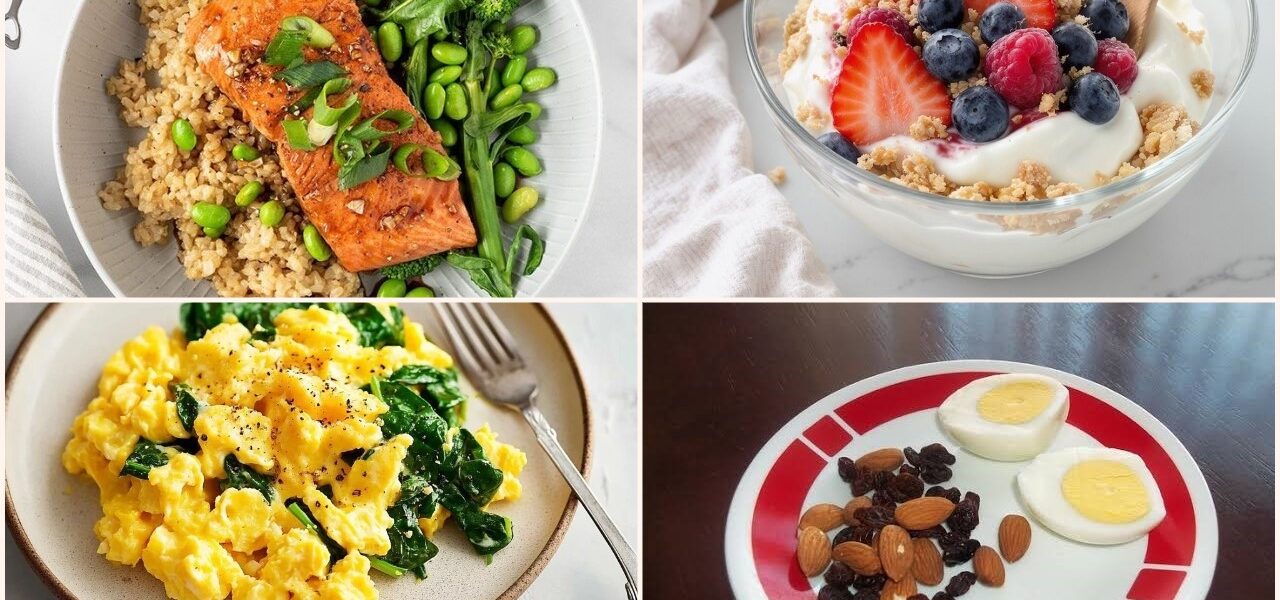High Protein meal guide is necessary when starting a new fitness journey or simply trying to eat healthier, one of the most common pieces of advice you will hear is eat more protein.
And rightly so protein is an essential nutrient that helps build muscle, supports recovery, and keeps you full longer.
While increasing protein intake sounds simple enough, many beginners struggle with how to plan, cook, and store in a way that fits into their already busy schedules, and that is where protein meal prep comes in.
Meal prepping has grown in popularity for its ability to save time, cut down on decision fatigue, and help individuals stay committed to their nutritional goals.
This blog post is tailored specifically for beginners who want to begin their journey into high protein meal prep.
Importance of High Protein Meal to the Body
Protein serves as the body’s building blocks. Every cell in your body contains protein, and it plays a vital role in muscle repair, hormone production, and immune function.
Especially for those who engage in physical activity, a high protein diet supports muscle recovery and growth.
Moreover, protein is more satisfying than carbohydrates and fats, which means that it helps you feel fuller for longer periods. This can lead to better appetite control and, ultimately, better weight management.
According to dietary guidelines, the average inactive adult should consume about 0.8 grams of protein per kilogram of body weight those who are active or looking to gain muscle mass may need anywhere between 1.2 to 2.0 grams per kilogram.
This means if you weigh 70kg and you are trying to build muscle, you might need as much as 140 grams of protein per day.
The Basics of High Protein Meal Prep
1. Set Your Weekly Goals
- The first mistake many beginners make is not having a clear plan. Before shopping or cooking, define your objectives. Your goals will determine the portion sizes, meal frequency, and protein content of your meals.
- For example, if you plan to eat three main meals and two snacks a day, you might aim to distribute your daily protein evenly across all five. This would mean consuming about 25–30 grams of protein per main meal and 10–15 grams per snack.
2. Pick Your Protein Sources Wisely
You do not have to eat chicken breast for every meal, variety is key to avoiding burnout and ensuring a balanced nutrient intake. Here are some great protein options:
- Animal based such as Chicken breast, turkey, lean beef, salmon, eggs, tuna, Greek yogurt, cottage cheese
- Plant based such as Lentils, chickpeas, black beans, quinoa, tofu, tempeh, edamame.
Mixing both types ensures you are getting a diverse range of amino acids and micronutrients.
One common error is relying too heavily on red meat, which can lead to increased intake of saturated fat. Aim to balance your meals with fish, poultry, and plant-based options as well.
3. Choose Complementary Carbs and Fats
- High protein meals should not mean zero carbs or fat. Carbohydrates fuel your workouts and daily activities, while healthy fats support hormone production and brain function.
- Brown rice, sweet potatoes, oats, and whole wheat pasta are excellent carb options. Avocados, olive oil, nuts, and seeds provide healthy fats that also help you feel satisfied.
- Another mistake to avoid is overlooking fiber. While focusing on protein, some people forget that fiber rich carbs like legumes and vegetables are essential for digestion.
4. Batch Cooking
- Cooking in bulk. This cannot be stressed enough, preparing multiple servings of chicken, rice, and roasted vegetables all at once saves time and ensures you always have a nutritious meal ready.
- A good starting point is prepping 3 to 4 days worth of meals to ensure freshness without the food going bad.
- Invest in proper storage containers preferably BPA free and microwave safe. Label them with the date they were cooked, so you do not accidentally eat something that is already past its best.
- If you are concerned about food boredom, consider switching up sauces or spices. The same grilled chicken can taste vastly different depending on whether you season it with lemon pepper, barbecue.
Sample High Protein Meal Prep Plan For Beginners
Here is a basic 3 day meal prep sample that includes animal and plant based proteins.
First Day:
- Breakfast: Scrambled eggs with spinach, mushrooms, and feta cheese
- Lunch: Grilled chicken breast, quinoa, and roasted broccoli
- Dinner: Baked salmon with brown rice and steamed green beans
- Snack 1: Greek yogurt with mixed berries
- Snack 2: Hard boiled eggs and a handful of almonds
Second Day:
- Breakfast: Oatmeal with protein powder, banana, and peanut butter
- Lunch: Turkey meatballs, whole grain pasta, and marinara sauce
- Dinner: Stir fried tofu with bell peppers and jasmine rice
- Snack 1: Cottage cheese with pineapple chunks
- Snack 2: Roasted chickpeas
Third Day:
- Breakfast: Protein smoothie (protein powder, almond milk, oats, banana, chia seeds)
- Lunch: Lentil and vegetable stew with a slice of whole wheat bread
- Dinner: Grilled shrimp with couscous and sautéed zucchini
- Snack 1: Protein bar (check the label to ensure quality)
- Snack 2: Celery sticks with hummus
Mistakes to Avoid when preparing High Protein Meal
- Not Varying Protein Sources: Eating chicken and broccoli every day might help with macros, but it will destroy your motivation and taste buds. Incorporate different meats, legumes, and fish.
- Skipping Breakfast or Snacks: Missing meals may lead to overeating later in the day. It also throws off your protein distribution, making it harder to meet daily targets.
- Ignoring Seasoning: A common beginner oversight is under seasoning food. Bland food is hard to stay consistent with. Seasoning doesn’t always mean sodium use herbs, spices, and citrus juices to add flavor without compromising health.
- Cooking Too Much Too Soon: Do not try to prep an entire week’s worth of meals right away. Start with 3 days, see what you like and adjust. Cooking too much in one go can also result in wasted food if you are not sure about portion sizes or flavors.
- Not Measuring or Tracking: Especially at the beginning, it helps to use a food scale or at least measure portions with cups or your palm to make sure you’re actually getting enough protein.
Starting a high protein meal prep routine does not have to be intimidating. In fact, once you get into the rhythm, you might find that you enjoy the structure and ease it brings to your daily routine.
The key is to plan realistically, cook what you enjoy eating, and do not get discouraged by small setbacks. It is important to remember that meal prep is not about perfection, it is about progress.
Each time you prepare your meals in advance, you are one step closer to hitting your nutrition goals. Over time, it becomes second nature.
And one final thing is that do not forget to clean your kitchen afterward. This might sound obvious, but you be surprised how many people forget until they walk into the kitchen the next morning.
A clean cooking space makes the next prep session far more enjoyable.
In conclusion
Whether your goal is to build muscle, lose fat, or just eat more balanced meals, incorporating high protein meal prep into your weekly routine can help you stay on track.




